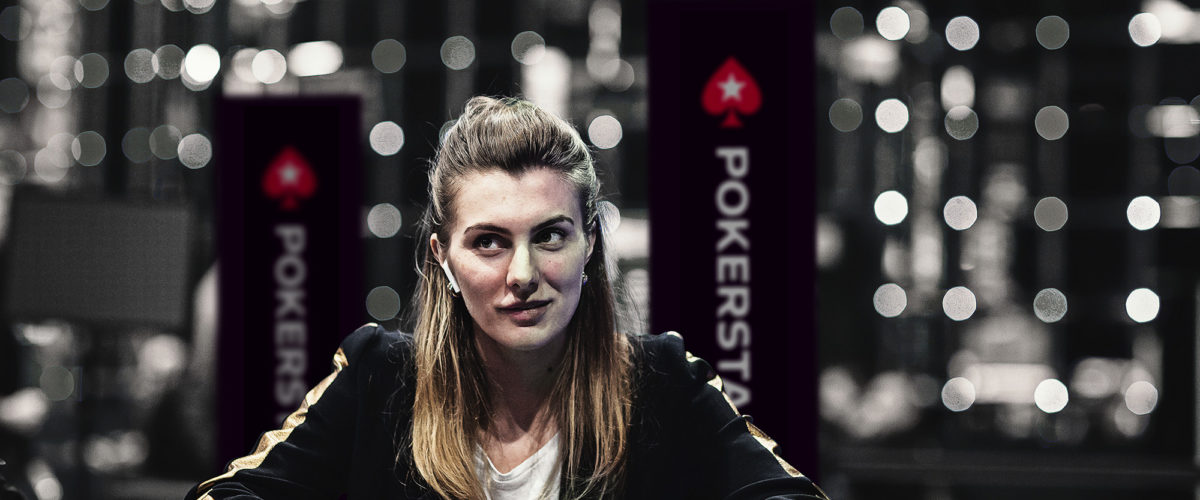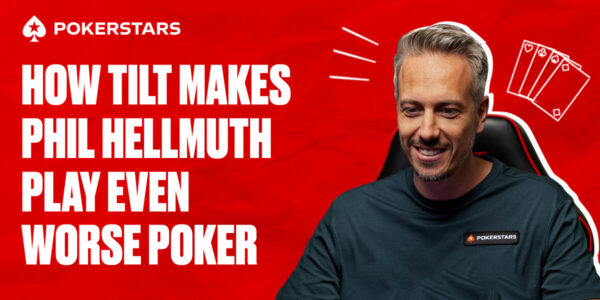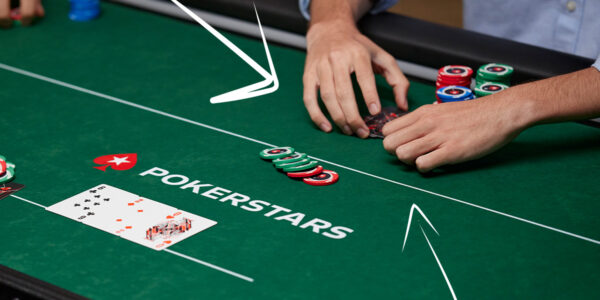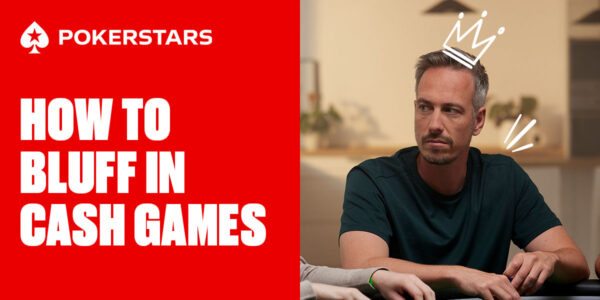The Game Theory of Board Texture: Part 3 – Ace High with Flush Draw
Let’s delve once again into the wide range world of Button (BU) vs. Big Blind (BB) in a single raised pot. While this spot is extremely standard and common, the effects of different board textures on the button raiser’s flop strategy are far from banal.
Recap
So far, we have been investigating low uneventful flops, which we saw were good for the BU player since they preserved the equity advantage that comes from playing an uncapped raising range against a capped calling range. These flops incentivised a lot of betting for the BU player because his opponent in the BB had to fold a lot due to having the weaker range. This was useful for the in-position player because many of the hands BB was folding were live against BU’s vulnerable value hands. Betting a thin value hand like AT on 224 is beneficial because Villain folds 98.
If a lot of your hands are ahead but vulnerable to hands which could hit six outs to improve, then you want to gobble up that fold equity by betting often.
Introducing a High Flop – Ah9h4s
Any flop which contains one or more cards equal to or higher than a Queen will be described as ‘high’. The Ace’s presence on this flop creates an abundant group of hands which did not exist on the low flops. These are medium strength, non-vulnerable hands. Hands like A3, KK, and QQ can be described as both mediocre and stable on this flop. When they are ahead, they are very likely to stay ahead of any hand that the Big Blind player would fold to a bet, and so we do not gain the same level of equity denial by forcing Villain to muck a weaker hand than ours when we have one of these holdings.
This means that your range having an equity advantage is now less of a powerful reason to bet on this flop since making Villain fold is of less benefit. BB only folds to these hands when he’s drawing near dead and that isn’t useful at all. These medium stable hands, then, are very well equipped for checking behind.
The result is that although BU’s equity advantage increases to 53% on this flop (up from 52% on the low flop) he actually wants to bet less often than on the lower flop. This wildly contradicts the old common-sense adage of ‘you should often bet on an ace high flop because it is good for your range.’
Ace high flops are decent enough for the BU raiser, but they are nothing spectacular and many hands are well suited to checking on these textures.
But Don’t We Need to Bet to Charge the Flush Draw?
Beginners often fall into the tempting trap of assuming that we need to bet more often on board containing a flush draw, but this is false. We do not get protection by betting K♣ K♦ , or any hand for that matter, against a flush draw on A♥ 9♥ 4♠ . If Villain has a hand like 8♥ 7♥ , then he has very high equity, is not folding to one bet, and will sometimes raise us and bet us off our hand as a semi-bluff. Our EV when we bet kings against a flush draw, then, is not necessarily any higher than it is when we check behind. However, consider this: when we have the kings and the BB instead holds a dead hand like 10♣ 6♣ , betting actually costs us money. Checking would be much higher EV here in theory because it gives Villain the chance to either catch up or bluff on a later street. Again, we gain little protection from folding out a hand that needs to improve twice (or in other words, must runner-runner something) to beat us.
Flush Draws Reduce Betting Frequency
In fact, the optimal c-bet frequency in this spot only 45% of the time. If we change the flop to A♥ 9♣ 4♠ so as to eliminate the flush draw, the optimal betting frequency is up to 59%. Why?
The answer can be found by going back to Episode 1. the BU’s range is further ahead on the rainbow board than on the flush draw containing flop and so he typically wants to bet more often on the former since Villain has to overfold his range. On the rainbow board, we can have a higher betting frequency with our vulnerable made hands like 66 and J9. Moreover, the flush draw flop actually allows the BB to catch up a bit in terms of equity. He does not have to fold to c-bets quite so often. This devalues BU’s bluffs and protection bets somewhat. We are less happy to bet for protection with 66 on the flush draw flop as Villain is less far behind our hand on average and has more unmade hands (flush draws) that are likely to win the pot from us.
Remember that we are not interested in trying to deny equity to a flush draw because it has too much equity to ever consider folding and can easily have a higher EV than some of our medium strength hands due to the times it raises us and wins the pot through brute force.
Polarising our Betting Range
The optimal c-bet frequency on A♥ 9♥ 4♠ is only 45% of the time. It achieves this by polarising its betting range. This means separating your betting range into two distinct parts – value hands and bluffs. This logically implies checking the hands in between. Since medium hands like Q♦ Q♠ have no ned for protection on this high flop, they rarely if ever bet. Meanwhile value hands like A♣ K♣ bet very often as do prosperous bluffs like 6♣ 5♣ . Meanwhile, some less promising trash like Q♦ 7♦ will choose to give up. We can’t always have showdown value when we check behind or else we never fold to a turn bet. That is the definition of suboptimal.
The Nut Advantage
As we know, nut advantage determines bet-sizing. We will bet larger when our range contains the best possible hands much more frequently than Villain’s range does. Another common misconception some players have before reaching an adept level is the belief that the pre-flop raiser has a big nut advantage on this ace high flop. There is a powerful objection to this claim. Ask yourself this: which hands generated BU’s nut advantage on the low flops? That’s right – overpairs. How healthy are TT-KK looking now that the Ace has come down?
These hands have been negated heavily by la large part of Villain’s range which has now made top pair. It is true that BU has more AK and AQ than BB does, but BB can easily have plenty of two pair and top pair combinations as well as a few set combos. We have no stock of overpairs here and so we favour small bets.
Most high flops reduce the Button’s nut advantage.
Conclusion
There we have it. The solution for this flop is to bet at a fairly low frequency, favouring a small sizing. We do not need protection as often as we did on the low boards; we have less unique nutted hands than on the low boards; and we need to respect that the flush draw actually helps Villain’s range catch up a bit to ours. Here is the overall flop strategy for the BU.
Dark Red = Bet 75% of the pot
Light Red/Pink = Bet 33% of the pot
Green = Check


Next time we shall examine a very extreme sort of board texture and try to apply the skills we have gained in this series to solve it.














